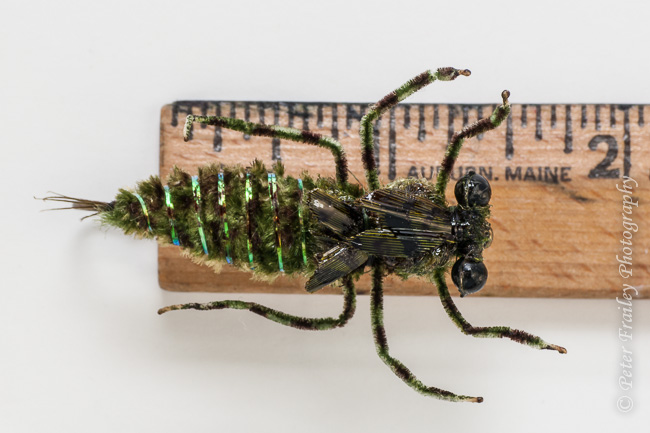I fish a number of local ponds/small lakes that are situated in
the middle of business campuses. There is no real reason to fish
these ponds seriously as most have only small bass and sunfish, but
they are close by and they are usually deserted. They all have good
numbers of both dragonfly and damselflies, and I get a kick out of
watching the small fish struggle to take a large nymph pattern.
The ponds have several species of dragonflies and most are quite
large, two species often run over 2 inches in length. One is a very
dark olive (the pattern I am sharing here) and the other is much
lighter. This pattern will work for both of them. The only changes
necessary are color changes to lighter olive from dark and using
less mottling. If you want to get ultra picky, the lighter colored
nymph is broader across the abdomen. If I’m in the mood to play
around, I’ll cut the under body a slightly different shape to
exaggerate the differences.

I looked in Schweibert’s “Dressing Nymphs & Larvae” and see that
the pattern used here is called Aeschna Constricta (Giant
Dragonfly Nymph) and he also mentions a closely related species (Epiaeschna
Heros, lighter colored).
There are lots of other species that range from pale olive to
reddish brown and this tying method would be suitable for all of
them. Subtly changing the underbody shape and reducing the hook
sizes is all you need to do.